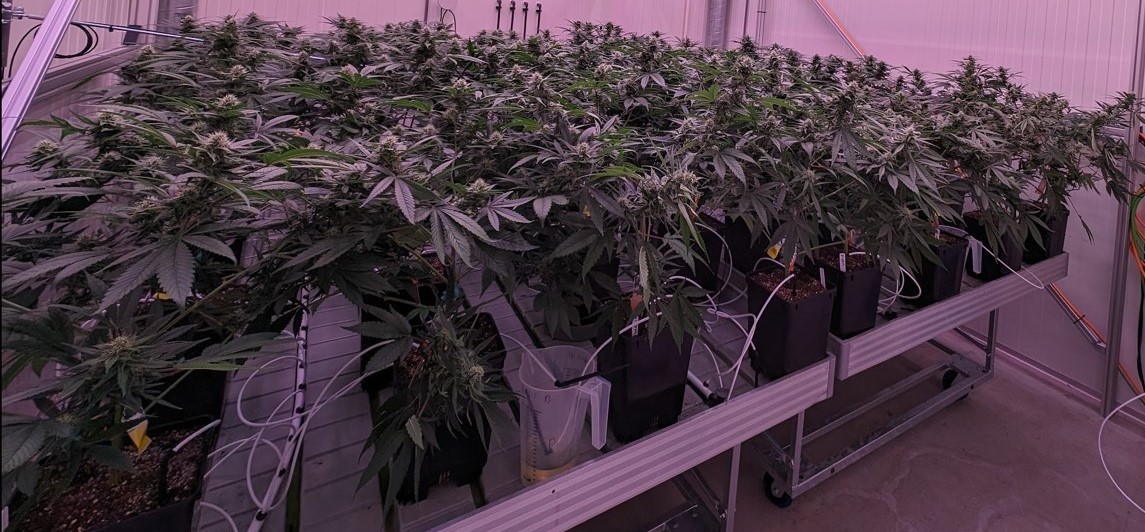Creating a standard selection method
“We will take advantage to fuse currently used methods and incorporate other horticulture methods to improve and standardize the selection process. Most cannabis growers select their own phenotypes by relying on plant characteristics and on their senses to assess qualities such as aroma, flavour and visual appearance which are difficult to quantify. While these subjective methods are valuable, they often make it difficult for professional cannabis cultivators to ensure stable, uniform and consistent crops, plus they may not provide comprehensive insights into a phenotype’s true potential. The method focuses on plant market demand more than economical growth characteristics,” comments Jaime Ahumada Espinoza, Project Manager Research within MCPIR alongside his role as Researcher/Consultant at Delphy.
Therefore, MCPIR is focusing on selecting phenotypes for its research trials using horticulture methods focused on plant traits and facility conditions first, so that plant and environment achieve their best in each cultivation style. We are developing a solid baseline with data that we can provide to customers that use different growth systems. “We use a predefined wide range of criteria in our selection process that go beyond the cannabis traditional plant traits. We are implementing a 3-step process. This allows us to identify phenotypes that exhibit superior characteristics and are well-suited for conducting research in various cannabis cultivation environments,” he continues.
Three-phase selection process
The selection process is divided into three phases. The first phase entails selecting plants based on predefined agronomic criteria that will serve as the foundation for further evaluation and testing in subsequent phases. The emphasis is on desirable traits that are pivotal for the optimization of cannabis cultivation logistics, including clonal production, mother plants low maintenance and branching characteristics for best propagation, disease resistance and environmental adaptability, low labour in production in addition to yield potential and cannabinoid and terpene profile in the shortest cycle style. “Based on tandem and index selection methods, this phase reduces the number of phenotypes by approximately 90%,” says Ahumada Espinoza.
In the second phase, the selected plants undergo rigorous testing to assess the stability and resilience of their genetics. “The phenotypes are being replicated through clones and grown over several cultivations under various conditions so that we can collect data on each phenotype. Only then can we proceed to the third phase: the final selection, in this selection traditional cannabis methods for aroma, flavour etc also come into play” he adds.
Innovating for a brighter future
The specific goal of this process is also accessing phenotypes that could perform well in future-oriented cultivation methods, according to Ahumada Espinoza. “Besides scientific excellence, the key is to unlock innovative cultivation methods that optimize efficiency and reduce labour costs. We aim to develop phenotype criteria to achieve a good result irrespective of growth style. Therefore, we are actively seeking phenotypes that align with these objectives, and developing standards that any grower can use when in need to go through this process themselves” he concludes.
The license to conduct research into cannabis cultivation paves the way for MCPIR to fulfil its ambition to investigate the most optimal cultivation methods for medicinal cannabis and create a blueprint by enhancing each aspect of the cultivation process. Growers have the aim of being profitable while ensuring good crop characteristics in an efficient way, meeting market demands.
To learn more about the science-based phenotype selection process or discuss any other aspect of licensed cannabis cultivation, contact Jaime Ahumada Espinoza, Project Manager Research at MCPIR: info@mcpir.nl.
With a current growth cycle of 11-12 weeks, cannabis cultivators can’t afford to get their crops of to a poor start. An ample supply of high-quality starting material is essential to ensure uniform growth and dependable results. Taking cuttings from mother plants is the most reliable and efficient way of obtaining good starting material, according to Rene Corsten, crop consultant at Delphy and part of the MCPIR consortium: “Effective mother plant management requires time and attention, but it considerably improves a grower’s efficiency and supports scaling up.”
For the successful cultivation of uniformly high-quality medicinal cannabis, it is essential to have good-quality starting material. “The cannabis cycle is like a 100-meter sprint in athletics. A poor start ruins your chances in the rest of the race because there’s no time to make up for it. Low-quality plant material gives you a bad start and therefore an unsatisfactory end-result,” says Rene Corsten.
Three options for starting material
Depending on the rules in the specific country where they are operating, cannabis producers can generally choose between three options for obtaining starting material: seeds, tissue culture, and mother plants. “Seeds are easy to ship around the world , plus there’s a wide choice of available products. However, because there are not a lot of F1 hybrids available yet, batches of cannabis seeds can exhibit considerable heterogeneity. In other words, growers may receive a huge variation within a strain which can lead to differences during the cultivation process,” explains Corsten. “Additionally, when growers are sowing frequently to keep pace with the short cultivation cycle, seeds are cost-intensive in terms of both the purchase price and labor,” he continues.
Tissue culture is the second option, resulting in plants with good vigor and genetic uniformity. “Tissue culture is also excellent for storing your genetics, providing a safety net in case of facility-wide issues like viruses or viroids. But only a small number of companies offer plant material in this way right now and it is an expensive solution states Corsten.
The third option is for growers to take cuttings from mother plants that they have grown themselves. “The cuttings are clones of the mother plant, so growers know that they have a uniform variety. This is also a relatively cost-effective option,” he says.
Visual versus anatomical equality
Nevertheless, obtaining starting material from mother plants is not as straightforward as it might seem: “Many cannabis growers tend to wait until a mother plant is nice and full and then trim it bare in one go, perhaps once a month. This gives them cuttings that look visually identical – the same length, same number of leaves – but the anatomical inequality between the cuttings might differ a lot. To avoid this, the cutting should be equally old with the same leave length on each cutting. This ensures that all the cuttings are at the same stage of development and therefore anatomically identical.
Why is anatomical equality so important? “Cuttings that are anatomically different from one another will result in unwanted inequality in vigor between the plants, plus the failure rate in rooting is unnecessarily high – and this increases further with older mother plants,” he explains. “Therefore, growers should ideally take cuttings from their mother plants preferably at least 3 times a week, and change the mother plants after 20-30 weeks. To ensure a steady supply of cuttings from all varieties, growers may need to start a new mother plant growing cycle for a variety once every 6-10 weeks .”

It pays to invest time and attention
Corsten admits that good mother plant management requires more time and attention than the traditional approach to mother plants. “And just as in other aspects of crop cultivation, it can take growers a while to get a feeling for which cuttings are ready for harvesting today and which should be left on the plant for a few more days,” he says.
“But it’s worth the effort, because in the longer-term mother plant management can considerably improve your efficiency and support scaling up. For example, a constant supply of high-quality plant material enables you to increase plant density, refrain from topping, shorten the growth cycle due to less vegetative days. Hence you can harvest earlier, resulting in more crop cycles per year with an overall higher yield,” he adds.
This is particularly important in the medicinal cannabis industry, which is currently undergoing a wave of professionalization. “As MCPIR, our ambition is to support licensed companies through this transition by shortening the learning process for them. One way we are doing this is by conducting research, aimed at developing an industry blueprint for enhancing each aspect of the cannabis cultivation process,” comments Corsten.
Accelerating the path to success
“We are also bridging the gap between the cannabis industry and vegetable or ornamental crop production. For example, mother plant management has been standard practice in Chrysanthemum and other floriculture crops for many years. We can help to accelerate the path to success for cannabis growers by facilitating access to all that existing knowledge and experience, so that they don’t have to reinvent the wheel,” he adds.
“When setting up the MCPIR cannabis research trials, we ourselves faced the decision about which type of starting material to use. We’ve opted to start with mother plants – based on a good mother plant management policy, of course – and that’s our recommendation for commercial growing facilities too!” he concludes.


